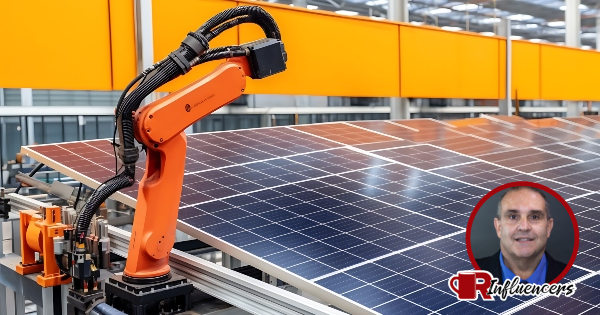Technology Fills the Gap Between Supply and Demand

RCS Influencer Trent Cotney says within the next 10 years, we will see significant robotics and automation take over a lot of the more labor-intensive task of roofing.
Editor’s note: The following consists of a conversation between RCS Multimedia Producer Megan Ellsworth and Partner of Adams and Reese, Trent Cotney. You can listen to the podcast or read the transcript below.
Megan Ellsworth: Hello everyone. My name is Megan Ellsworth here at RoofersCoffeeShop.com, and I am back again for a June influencer response with Trent Cotney. Hey, Trent.
Trent Cotney: Hey, how's it going?
Megan Ellsworth: Going good. Excited to hear what you have to say. This month's topic is all about robotics, and the question is, what field automation/robotics are changing how contractors install roofing and help with the labor shortage?
Trent Cotney: Yeah, so I've talked about this issue a lot in different contexts, and one of the things I always say is that anytime you've got a gap between supply and demand like we do with labor, what ends up filling that is technology. So when I look out there, I know that there are already several manufacturers that are actively looking into automation of its systems on liquid applied and coatings. I think they are rapidly moving forward with increased automation.
One of the things I think is really interesting is on steep slope use of robots and/or drones to engage in roof removal, and then possibly shingle at a later date. So ultimately, I think it's just a matter of time. I would say within the next 10 years, you're going to see significant robotics and automation take over a lot of the more labor-intensive task of roofing. It's got to happen because there just isn't enough labor to meet the need.
Now, I think there's certain sectors like copper or slate or maybe flashing work, things like that, that requires a little bit more hands-on that it would be very difficult to have any machine replicate. But I think if you're talking shingles, TPO, that kind of stuff, I think you're going to see an increased trend towards automation, robotics, that kind of thing, to limit the need for labor.
Megan Ellsworth: Absolutely. That's so true. How do you think contractors can prepare for this?
Trent Cotney: Well, one of the things, look, the roofing industry is very slow to change. I always say roofing, legal, insurance, and accounting are probably the four industry slowest to change. So what I would recommend is really get out in front. You don't want to have someone outside the industry come in and put everybody out of business. So the key thing is you want to embrace the technology. Don't be scared of it, embrace it. Be at that forefront. Create those efficiencies. Put the pressure on your competition. I think that's the way to really make sure that you've got your finger on the pulse rather than having someone else come in and displace you.
I think it's important to experiment with technology that's out there. That being said, technology is very expensive. I know from personal experience, investment in software and other things, if you don't get it right, then you're basically just throwing that money away. So I would wait until the products and the manufacturing process is a little ironed out, but as soon as it gets there, maybe you don't be the tip of the spear, but maybe you'd be right behind that and jump on board and start learning about it.
Megan Ellsworth: Yeah. That's great advice. Just getting ahead of some of your competitors, but not all of them.
Trent Cotney: Right, right.
Megan Ellsworth: Awesome. Well, thank you so much for replying to this month's topic, and I look forward to hearing what you have to say next month.
Trent Cotney: Sounds good. Thanks as always.
About Trent Cotney
Trent Cotney is a partner and Construction Practice Group Leader at the law firm of Adams and Reese LLP and NRCA General Counsel. For more information, reach out to Trent at trent.cotney@arlaw.com.


-2025-xtv-mls-tour-2.png)
















Comments
Leave a Reply
Have an account? Login to leave a comment!
Sign In